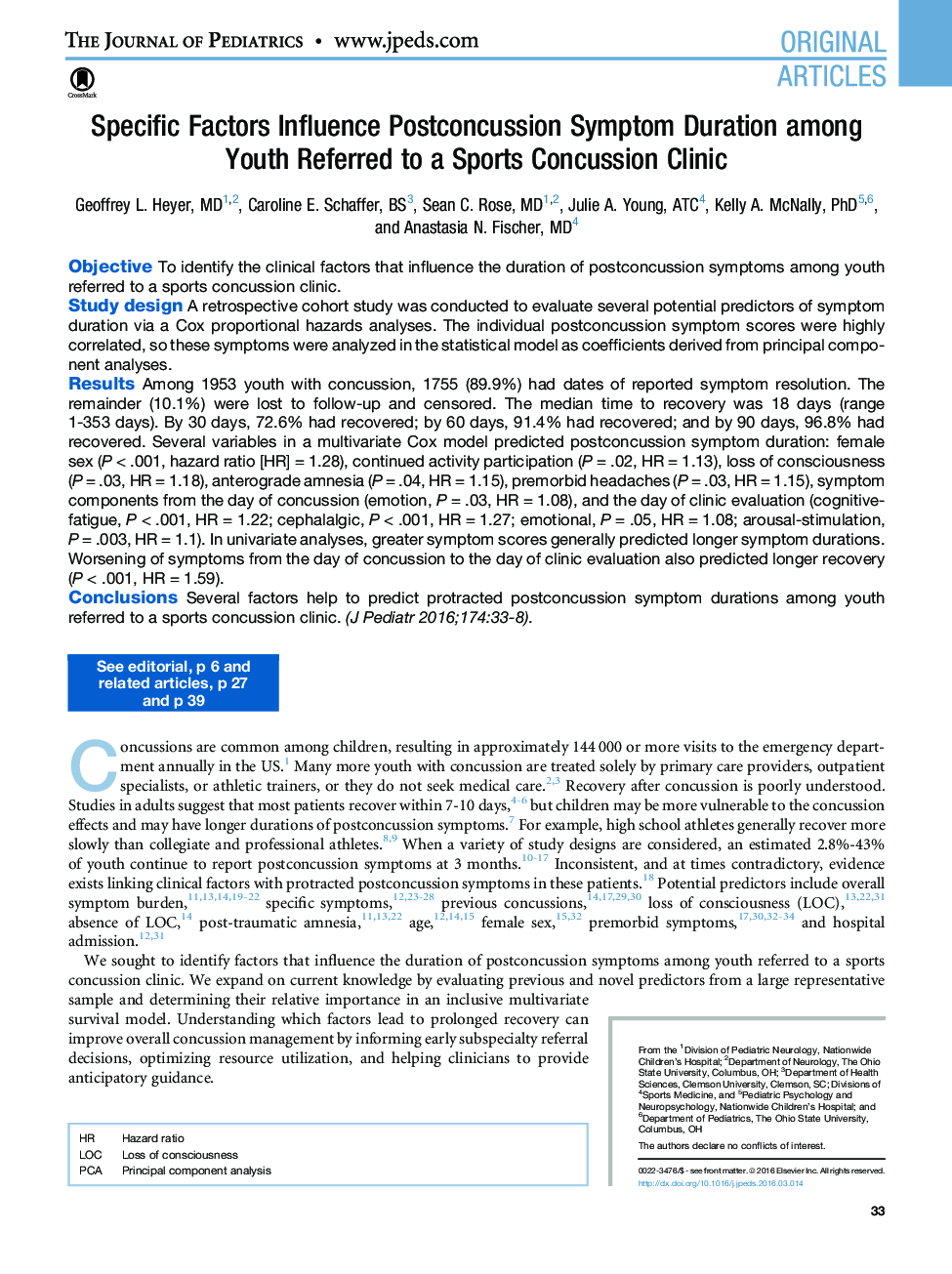| Article ID | Journal | Published Year | Pages | File Type |
|---|---|---|---|---|
| 6218864 | The Journal of Pediatrics | 2016 | 8 Pages |
ObjectiveTo identify the clinical factors that influence the duration of postconcussion symptoms among youth referred to a sports concussion clinic.Study designA retrospective cohort study was conducted to evaluate several potential predictors of symptom duration via a Cox proportional hazards analyses. The individual postconcussion symptom scores were highly correlated, so these symptoms were analyzed in the statistical model as coefficients derived from principal component analyses.ResultsAmong 1953 youth with concussion, 1755 (89.9%) had dates of reported symptom resolution. The remainder (10.1%) were lost to follow-up and censored. The median time to recovery was 18Â days (range 1-353Â days). By 30Â days, 72.6% had recovered; by 60Â days, 91.4% had recovered; and by 90Â days, 96.8% had recovered. Several variables in a multivariate Cox model predicted postconcussion symptom duration: female sex (PÂ <Â .001, hazard ratio [HR]Â =Â 1.28), continued activity participation (PÂ =Â .02, HRÂ =Â 1.13), loss of consciousness (PÂ =Â .03, HRÂ =Â 1.18), anterograde amnesia (PÂ =Â .04, HRÂ =Â 1.15), premorbid headaches (PÂ =Â .03, HRÂ =Â 1.15), symptom components from the day of concussion (emotion, PÂ =Â .03, HRÂ =Â 1.08), and the day of clinic evaluation (cognitive-fatigue, PÂ <Â .001, HRÂ =Â 1.22; cephalalgic, PÂ <Â .001, HRÂ =Â 1.27; emotional, PÂ =Â .05, HRÂ =Â 1.08; arousal-stimulation, PÂ =Â .003, HRÂ =Â 1.1). In univariate analyses, greater symptom scores generally predicted longer symptom durations. Worsening of symptoms from the day of concussion to the day of clinic evaluation also predicted longer recovery (PÂ <Â .001, HRÂ =Â 1.59).ConclusionsSeveral factors help to predict protracted postconcussion symptom durations among youth referred to a sports concussion clinic.
